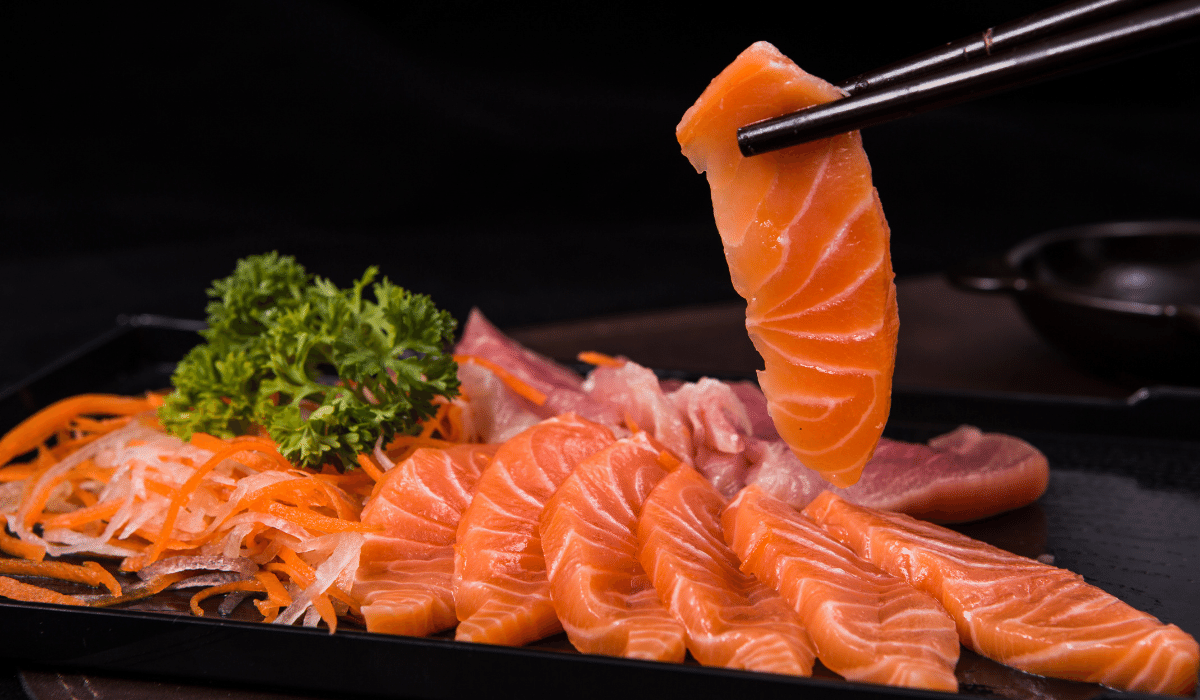Sushi and sashimi are both Japanese dishes, to be appreciated for their different tastes, but there are some relevant differences to be noted.
Sashimi is a Japanese word that roughly translates to “pierced body” and describes a dish made of thinly sliced fish or various types of meat. Soy sauce is the only dipping sauce used with sashimi. The flavour of the meat will be more pronounced as a result.
Fish appropriate for sashimi is some of the greatest seafood available. It is caught on a single line rather than a net, and after it is landed, it is immediately killed and iced, which allows it to keep its freshness with minimum lactic acid buildup or degradation.
Sashimi is just raw fish slices that are occasionally dipped in sauces and served alongside sushi. Any dish called sushi is made of vinegared rice and is typically served with additional toppings, however, this isn’t always the case. It so happens that it’s frequently served with different kinds of seafood, either cooked or raw and possibly even a combination of the two; however, that custom simply derives from the local dishes that were the staples of the areas where sushi first appeared (not Japan, by the way). There are virtually no restrictions on the toppings that can be used on sushi.
Is sashimi really raw?
The idea that sushi is any dish served with raw fish has arisen as a result of the variety of sushi presented with raw seafood.
meat, which was typically seafood and packed in rice with salt as preservation. The fish meat is eventually broken down into amino acids by the vinegar that is created when the rice ferments. One of the five basic flavours that a person’s tongue can identify is umami, which is the outcome of this and produces a powerful flavour. The rice would then be thrown away and only the meat would be consumed once the meat had been properly fermented and so preserved. In essence, it was just a practical method for keeping meat preserved before ice boxes and freezers.
Rice is now the main component of the meal in modern types of sashimi which are normally not prepared in this manner.
The first distinction is that sashimi is raw meat that has been finely sliced, usually fish, and is often eaten without rice. Sashimi is typically some kind of salmon or tuna. Shrimp, scallops, clams, octopus, yellowtail, mackerel, and other seafood are also common ingredients in sashimi. Sashimi translates as “pierced fish.”
While a lot of people mistakenly believe that sushi also contains raw fish, it is vinegar rice combined with a variety of additional components, some of which may or may not include cooked fish. While raw fish may be a typical component of the majority of sushi varieties, it is not necessary for this dish.
Sashimi is indeed raw fish. However, freshness, quality, and cut are important in addition to raw fish.
It should come as no surprise that the Japanese speciality consists of thinly sliced raw fish given that the name “sashimi” is derived from the Japanese words “sa” (meaning “knife”) and “shi” (meaning “fillet”). Typically, only soy sauce is used in the dish so that the meat may shine as the centrepiece of this deliciously umami-flavoured dish. But wasabi or pickled ginger could also be served with it.
Sashimi is produced with exceptionally high-quality fish because it is served raw. That benefits both your health and taste buds. Fish of poor quality or improper preparation can give you a stomach ache. Doctors have documented instances of parasitic diseases, sometimes known as worms, in sushi eaters. Because of this, high-quality sashimi fish (typically tuna, yellowtail, mackerel, and salmon).
